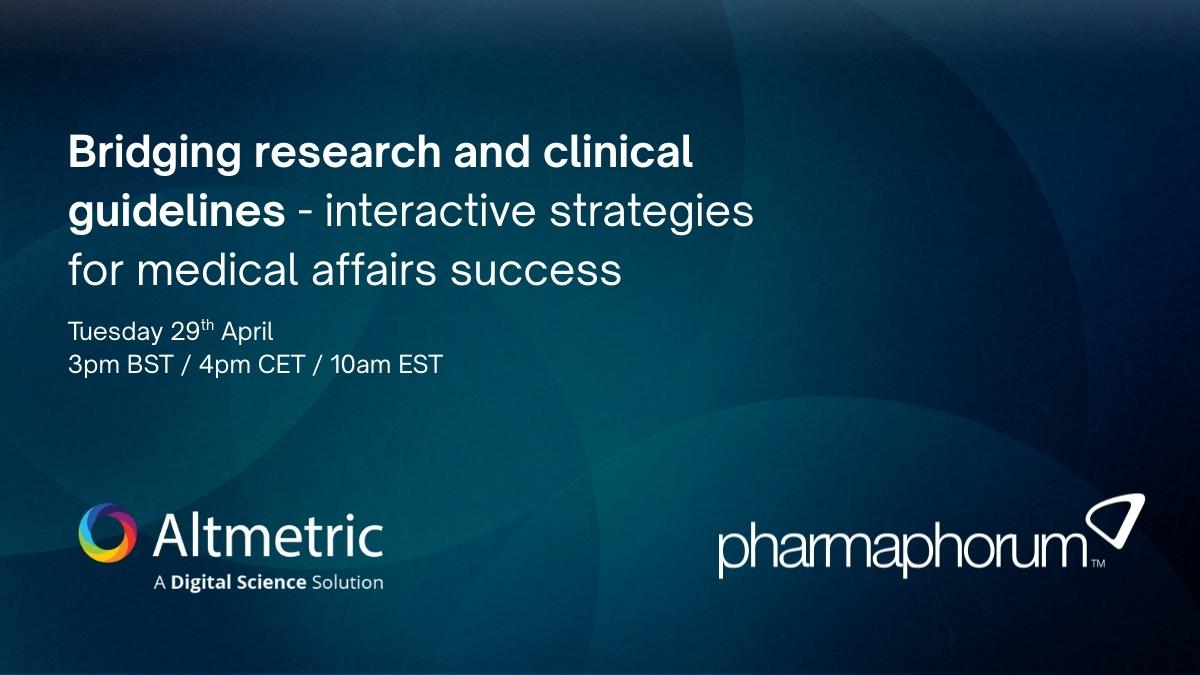The unexpected starting line: Solving drug affordability at the doctor's office

In early 2025, the White House renewed its push to lower prescription drug prices, part of an executive order aimed at easing patients' financial burdens. While the directive garnered headlines, many experts questioned its near-term impact. The complexity of the US drug pricing system and longstanding regulatory stagnation mean affordability remains a distant promise for millions. Yet, even as Washington debates how best to address soaring costs, a more immediate and actionable solution may be hiding in plain sight: the exam room.
The 2025 State of Drug Access report on prescription drug accessibility revealed that nearly half of Americans (42%) were prescribed a medication they couldn't afford in the past year. The fallout from those price barriers is stark. More than one in 10 respondents said they stopped taking a prescribed drug entirely because of the cost. Others admitted skipping doses, rationing refills, or abandoning prescriptions at the pharmacy counter.
These aren't marginal cases; they're mainstream experiences. And they reflect a system that continues to burden patients with complexity, fragmentation, and out-of-pocket costs they weren't prepared to shoulder.
Patients don't want portals – They want their doctor
One of the report's clearest insights is how much patients rely on their physicians when affordability becomes a barrier. Nearly half of respondents (47%) said their first call was to their doctor, not their insurer, not the pharmacy, and not a savings app. Only 12% contacted their health plan, and fewer than 18% sought discounts at the point of sale.
This behaviour shines light on what's often missing from affordability conversations: trust. Patients overwhelmingly want their prescribers to lead the way in helping them access lower-cost alternatives. In fact, 90% of respondents said they'd be happy if their doctor proactively switched them to a less expensive medication. And 86% said they would prefer physicians to automatically prescribe the lowest-cost drug that's clinically viable – no coupon codes, no online searches, no surprises at the pharmacy.
Despite this clear preference, nearly 60% of members said their doctor has never helped them navigate high drug costs. That gap represents one of the most urgent opportunities in healthcare: empower the most trusted figure in the care journey with the tools to deliver value-driven prescriptions without added friction.
Complexity isn't a side effect – It's the problem
The cost of medications is often discussed in isolation from the experience of trying to afford them. But for most patients, the burden isn't just financial; it's logistical. When asked what makes filling a prescription so difficult, nearly half of Americans cited confusion over final pricing, difficulty navigating apps, and uncertainty around what their plan actually covers.
More than half (53%) said knowing what they'll owe is confusing until they get to the counter. Nearly 48% find drug discount tools hard to use, and only 30% are even aware that they have access to a drug savings programme through their health plan. Alarmingly, another 31% say they're not sure whether they do.
That ambiguity is more than a communications failure; it's a barrier to adherence. When patients don't understand the financial implications of their care upfront, they may delay or skip treatment altogether.
Member-directed tools are hitting a wall
In recent years, the market has seen an explosion of apps, platforms, and discount services meant to help patients find better deals on their medications. However, according to the survey, these tools often create more friction than they solve.
Among those who do use them, frustration is common. Many respondents described the experience as "overwhelming," "confusing," or "time-consuming." A third said they receive too many notifications. Across the board, users expressed fatigue while navigating a fragmented patchwork of digital tools with unclear eligibility, fluctuating prices, and inconsistent savings. This digital fatigue has real consequences. When members can't rely on the tools provided or don't trust them to be accurate, they're less likely to seek out alternatives. It's not just an access issue; it's a motivation one.
Simplifying polypharmacy to improve outcomes
The affordability gap becomes even more dangerous when it intersects with polypharmacy. Patients managing five or more prescriptions, especially older adults and those on fixed incomes, face what amounts to a second full-time job. They're juggling refill dates, dosing schedules, interactions, side effects, and overlapping costs, often with little centralised support.
Survey respondents managing multiple medications described the experience as "exhausting," "disorganised," and "stressful." Many said they were unsure which prescriptions were still necessary or whether their providers were aware of all the medications they’d been prescribed. Caregivers echoed these sentiments, emphasising the mental load and logistical burden of coordinating medications across multiple providers and pharmacies.
Simplification is key. Once again, prescribers are best positioned to lead by deprescribing when appropriate, aligning medications to reduce redundancy, and recommending cost-effective alternatives that preserve therapeutic value.
The path forward: Make it easier to do the right thing
The survey surfaces one overarching truth: Americans are not resistant to change; they're resistant to hassle. Nearly 90% are willing to switch medications if it saves them money, and it’s clear they want their prescribers to make that call. Instead of more apps, they need clarity, consistency, and confidence delivered in the exam room.
For plan sponsors and healthcare leaders, the real call to action is to invest in systems that make cost-saving opportunities visible to prescribers at the point of care, not through pop-ups, workflow disruptions, or extra clicks, but through seamless integration that aligns with how clinicians already practice.
Patients don't want to be amateur pharmacists. They don't want to spend hours decoding formularies or cross-referencing discount sites. They want to trust that their care team has already found the most affordable, effective option for them – and that it will be waiting at the pharmacy when they arrive.
Washington may continue debating the long-term economics of drug pricing. But, in the meantime, the simplest fix may be the most powerful: make it easy for physicians to prescribe the most affordable option for their patients.
What plan sponsors can do today
If the survey made one thing clear, it's that the current drug affordability experience is failing members on multiple fronts: access, clarity, and trust. But plan sponsors have the power to shift that dynamic. Here's how:
- Support prescriber-led cost interventions
Members trust their physicians over apps or call centres to guide cost-related decisions. To make that trust actionable, plan sponsors should invest in tools that automatically surface more affordable alternatives.
- Simplify the member experience
Half of all members say they're confused about what they'll pay at the pharmacy. Discount tools add to the noise instead of cutting through it. By centralising affordability information and routing it through the prescriber, patients are able to access affordable alternatives through their existing trust in their prescriber.
- Make polypharmacy simpler and safer
Patients taking five or more medications describe the experience as chaotic and overwhelming. Use intelligent systems to flag therapeutic duplication and deprescribing opportunities, then route them through the prescriber's existing workflow to reduce medication burden without adding complexity.
- Drive biosimilar adoption through prescriber confidence
Most patients don't know what a biosimilar is, but they're open to cost-effective substitutions when their doctor explains them. Equip prescribers with automation tools that identify biosimilar availability, align with the plan's formulary, and present an equivalent alternative for instant approval.
- Use affordability to build loyalty
Nearly three-quarters of respondents say their opinion of their health plan would improve if offered a well-designed savings programme. Help members feel seen, supported, and able to afford their care without stress.
Physicians don't need more tasks; they need better tools. Smart automation paired with accurate formulary data allows prescribers to act, not after frustration sets in at the pharmacy counter. When doctors can confidently substitute an expensive prescription with a viable lower-cost option, and patients know it won't compromise their treatment, savings scale and patients can take necessary medications as prescribed.
About the author
 Ryan Czado, PharmD, MBA, is a pharmacy benefits expert with a background spanning PBMs, health plan consulting, and employer benefits strategy. With leadership roles at Express Scripts, Minuteman Health, Deloitte, and Lockton, Czado has helped organisations streamline pharmacy programmes and reduce costs. As chief pharmacy officer at RazorMetrics, he focuses on simplifying prescription decisions to optimise healthcare spending.
Ryan Czado, PharmD, MBA, is a pharmacy benefits expert with a background spanning PBMs, health plan consulting, and employer benefits strategy. With leadership roles at Express Scripts, Minuteman Health, Deloitte, and Lockton, Czado has helped organisations streamline pharmacy programmes and reduce costs. As chief pharmacy officer at RazorMetrics, he focuses on simplifying prescription decisions to optimise healthcare spending.












